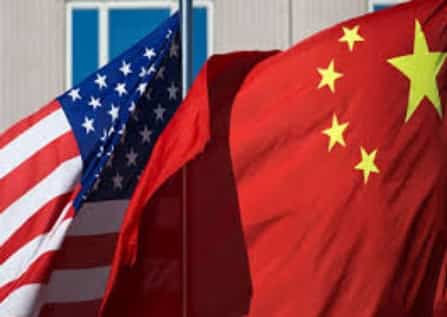 Houston — President Donald Trump has signed into law a bill that will reduce or suspend tariffs on roughly 1,660 products imported into the US, more than half of which are chemicals and plastics. USA tariffs duties Chinese products trade
Houston — President Donald Trump has signed into law a bill that will reduce or suspend tariffs on roughly 1,660 products imported into the US, more than half of which are chemicals and plastics. USA tariffs duties Chinese products trade
However, the Miscellaneous Tariff Bill of 2018, or MTB, which Trump signed late Thursday, does not apply to new so-called Section 301 tariffs on Chinese products implemented in July and August and potentially another chemical-heavy round that could be implemented as soon as late September. USA tariffs duties Chinese products trade
The process to suspend or reduce duties on products listed in the MTB had been ongoing for about five years, said Ed Brzytwa, director of international trade for the American Chemistry Council, in an interview Friday. While it rolls back tariffs on products already in the US tariff schedule, MTB will not erase additional Section 301 duties, he said.
For example, if a chemical or product that was already on the schedule had a 5% tariff, MTB will reduce or suspend it. If the same product faces a new 25% duty imposed August 23 as part of $16 billion in tariffs on Chinese products amid escalating US-China trade tensions, MTB will not apply. The product would have a 25% duty — or slightly more — rather than a 30% duty because MTB would erase or reduce the duty that was already in place, Brzytwa explained. USA tariffs duties Chinese products trade
“It doesn’t take away the president’s authority to apply these additional duties,” he said of MTB. USA tariffs duties Chinese products trade
Matt Francoeur, regulatory and sales specialist with The Chemical Company, a global chemical supplier, said in an interview Friday that the last MTB expired in 2012, and the version that became the bill Trump signed Thursday was introduced in November last year. He said the new law likely made it through Congress to Trump so quickly in response to tariffs the Trump administration has imposed on imports so far this year, starting with steel and aluminum in March. USA tariffs duties Chinese products trade
The ACC has vehemently argued against imposing more tariffs on Chinese chemical and plastic products, saying the additional cost threatens growth in petrochemical manufacturing and infrastructure by siphoning demand for US chemical and resin exports.
“Depending on the elasticity of demand (responsiveness) for US products in China, the retaliatory tariffs could result in substantial losses for American producers, their employees, and for the communities that depend on the economic activity that the chemicals and plastics industry generates,” The ACC said in a report last week.
ACC said Trump signing MTB into law showed support for US chemical manufacturers that rely on foreign inputs to retain their production cost advantage over other regions, and hoped that it would help Trump “see that a zero-tariff policy that helps create new markets for producers and brings innovative products of chemistry to new regions is the best course for U.S. trade policy.” USA tariffs duties Chinese products trade
So far, $50 billion in new Section 301 tariffs on Chinese products have been implemented in two parts: $34 billion on July 6 and $16 billion on August 23. China responded with retaliatory tariffs on US goods of the same value on the same dates.
Another $200 billion in US tariffs on Chinese goods is under consideration, with China ready to retaliate with $60 billion in duties on US goods.
Of the new tariffs in place, the $16 billion list was chemical heavy, and China’s response included two grades of polyethylene that make up 80% of the 9.2 million mt/year of known US polyethylene capacity starting up along the US Gulf Coast in 2017 through next year and beyond. All or most of that new output will be exported, and most of that is targeted to Asia – mainly China and India – which have the highest expected demand growth in the world, according to S&P Global Platts Analytics.
–Kristen Hays, kristen.hays@spglobal.com
–Edited by Richard Rubin, richard.rubin@spglobal.com
